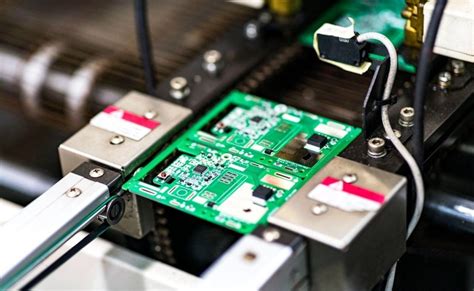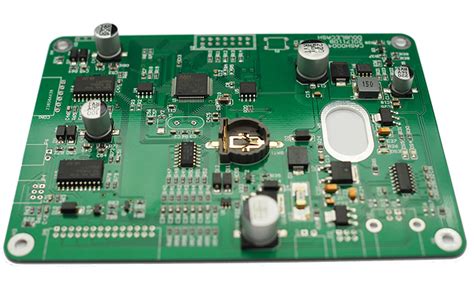PCB Trace Width Calculator: A Comprehensive Guide
Introduction
Printed Circuit Boards (PCBs) are the backbone of modern electronics. They provide the necessary electrical connections between components, ensuring that devices function as intended. One of the critical aspects of PCB design is determining the appropriate trace width for the electrical connections. The trace width affects the board’s performance, reliability, and manufacturability. This is where a PCB Trace Width Calculator becomes an invaluable tool for engineers and designers.
In this article, we will explore the importance of trace width in PCB design, the factors that influence it, and how a PCB Trace Width Calculator can help optimize your designs. We will also discuss the underlying principles, formulas, and practical considerations that go into determining the correct trace width for your PCB.
The Importance of Trace Width in PCB Design
Electrical Performance
The trace width on a PCB directly impacts its electrical performance. A trace that is too narrow may not be able to handle the required current, leading to overheating and potential failure. On the other hand, a trace that is too wide can take up unnecessary space on the board, making the design less efficient.
Thermal Management
Trace width also plays a crucial role in thermal management. As current flows through a trace, it generates heat due to the trace’s resistance. If the trace is too narrow, it may not dissipate heat effectively, leading to elevated temperatures that can damage the PCB or its components. Proper trace width ensures that the heat generated is within acceptable limits, maintaining the board’s reliability.
Manufacturability
From a manufacturing perspective, trace width affects the ease with which a PCB can be produced. Extremely narrow traces may be challenging to fabricate, especially with certain manufacturing processes. Additionally, the choice of trace width can influence the cost of production, as narrower traces may require more precise (and expensive) manufacturing techniques.

Factors Influencing Trace Width
Several factors influence the appropriate trace width for a given PCB design. Understanding these factors is essential for making informed decisions when using a PCB Trace Width Calculator.
Current Carrying Capacity
The primary factor in determining trace width is the amount of current the trace needs to carry. Higher currents require wider traces to minimize resistance and prevent overheating. The relationship between current and trace width is governed by Ohm’s Law and the power dissipation formula.
Trace Thickness
The thickness of the trace, often referred to as the copper weight, also affects its current-carrying capacity. Thicker traces can carry more current than thinner ones, all else being equal. Copper weight is typically measured in ounces per square foot (oz/ft²), with common values being 0.5 oz, 1 oz, and 2 oz.
Temperature Rise
The allowable temperature rise is another critical factor. This is the maximum temperature increase that the trace can experience above the ambient temperature without causing damage. A higher allowable temperature rise permits narrower traces, but this must be balanced against the risk of thermal damage.
PCB Material
The material of the PCB itself can influence trace width. Different materials have varying thermal conductivity and thermal expansion properties, which can affect how heat is dissipated and how the trace behaves under thermal stress.
Environmental Conditions
The operating environment of the PCB can also impact trace width. For example, a PCB used in a high-temperature environment may require wider traces to ensure reliable operation. Similarly, PCBs exposed to mechanical stress or vibration may need wider traces to prevent breakage.
Understanding the PCB Trace Width Calculator
A PCB Trace Width Calculator is a tool that helps designers determine the appropriate trace width based on the factors mentioned above. These calculators use established formulas and standards to provide accurate recommendations, ensuring that the PCB will perform reliably under the specified conditions.
Key Inputs
To use a PCB Trace Width Calculator effectively, you need to provide several key inputs:
- Current (I): The amount of current the trace needs to carry, typically measured in amperes (A).
- Copper Weight (t): The thickness of the copper trace, usually measured in ounces per square foot (oz/ft²).
- Temperature Rise (ΔT): The maximum allowable temperature rise above ambient, measured in degrees Celsius (°C).
- Ambient Temperature (Ta): The temperature of the environment in which the PCB will operate, measured in degrees Celsius (°C).
- Trace Length (L): The length of the trace, which can affect its resistance and heat dissipation.
Outputs
Based on these inputs, the calculator will provide the following outputs:
- Minimum Trace Width (W): The smallest width that the trace can be to safely carry the specified current without exceeding the allowable temperature rise.
- Trace Resistance (R): The resistance of the trace, which can be used to calculate voltage drop and power dissipation.
- Power Dissipation (P): The amount of power dissipated as heat by the trace, which is crucial for thermal management.
Formulas Used
The PCB Trace Width Calculator typically uses the following formulas to determine the appropriate trace width:
- Current Carrying Capacity:
[
I = k \cdot \Delta T^{0.44} \cdot A^{0.725}
]
Where:
- ( I ) is the current in amperes.
- ( k ) is a constant that depends on the copper weight and the units used.
- ( \Delta T ) is the temperature rise in degrees Celsius.
- ( A ) is the cross-sectional area of the trace.
- Trace Resistance:
[
R = \rho \cdot \frac{L}{A}
]
Where:
- ( R ) is the resistance in ohms.
- ( \rho ) is the resistivity of copper (approximately 1.72 x 10^-8 ohm-meters).
- ( L ) is the length of the trace in meters.
- ( A ) is the cross-sectional area of the trace in square meters.
- Power Dissipation:
[
P = I^2 \cdot R
]
Where:
- ( P ) is the power dissipated in watts.
- ( I ) is the current in amperes.
- ( R ) is the resistance in ohms.
Practical Considerations
While the formulas provide a theoretical basis for determining trace width, there are practical considerations that designers must keep in mind:
- Manufacturing Tolerances: PCB manufacturers have specific tolerances for trace width and spacing. It’s essential to ensure that the calculated trace width falls within these tolerances.
- Signal Integrity: For high-speed or high-frequency signals, trace width can affect impedance and signal integrity. In such cases, additional considerations like controlled impedance may be necessary.
- Thermal Vias: In high-current applications, thermal vias can be used to help dissipate heat more effectively, allowing for narrower traces.
- Layer Stackup: The layer stackup of the PCB can influence trace width. For example, inner layers may have different thermal properties compared to outer layers, affecting heat dissipation.

Using a PCB Trace Width Calculator: A Step-by-Step Guide
Let’s walk through the process of using a PCB Trace Width Calculator with a practical example.
Step 1: Gather Input Data
Suppose we are designing a PCB that will carry a current of 2 A. The copper weight is 1 oz/ft², and the maximum allowable temperature rise is 10°C. The ambient temperature is 25°C, and the trace length is 10 cm.
Step 2: Input Data into the Calculator
Enter the following values into the PCB Trace Width Calculator:
- Current (I): 2 A
- Copper Weight (t): 1 oz/ft²
- Temperature Rise (ΔT): 10°C
- Ambient Temperature (Ta): 25°C
- Trace Length (L): 10 cm
Step 3: Review the Outputs
The calculator will provide the following outputs:
- Minimum Trace Width (W): 0.5 mm
- Trace Resistance (R): 0.02 ohms
- Power Dissipation (P): 0.08 watts
Step 4: Validate the Results
Check that the calculated trace width (0.5 mm) is within the manufacturing tolerances of your PCB fabricator. Additionally, ensure that the power dissipation (0.08 watts) is acceptable for your design, considering the thermal management strategy.
Step 5: Adjust as Necessary
If the calculated trace width is too narrow or too wide for your design, you can adjust the inputs. For example, increasing the copper weight or allowing a higher temperature rise may permit a narrower trace.
Advanced Considerations
High-Current Applications
In high-current applications, such as power supplies or motor drivers, trace width becomes even more critical. In these cases, it may be necessary to use multiple layers or wider traces to handle the current without excessive heating. Additionally, thermal vias can be used to improve heat dissipation.
High-Speed Design
For high-speed or high-frequency designs, trace width affects impedance and signal integrity. In such cases, controlled impedance traces may be required, and the trace width must be carefully calculated to match the desired impedance.
Multi-Layer PCBs
In multi-layer PCBs, the trace width may vary depending on the layer. Inner layers typically have different thermal properties compared to outer layers, so the trace width may need to be adjusted accordingly.
Environmental Factors
If the PCB will be used in harsh environments, such as high temperatures or high humidity, additional considerations may be necessary. For example, wider traces may be required to ensure reliability under extreme conditions.
Conclusion
Determining the appropriate trace width is a critical aspect of PCB design that affects electrical performance, thermal management, and manufacturability. A PCB Trace Width Calculator is an essential tool that helps designers optimize their designs by providing accurate recommendations based on key inputs such as current, copper weight, and temperature rise.
By understanding the factors that influence trace width and how to use a PCB Trace Width Calculator effectively, designers can ensure that their PCBs are reliable, efficient, and cost-effective. Whether you’re working on a simple single-layer board or a complex multi-layer design, the principles and tools discussed in this article will help you achieve the best possible results.
As technology continues to advance, the demands on PCB design will only increase. By mastering the use of tools like the PCB Trace Width Calculator, you can stay ahead of the curve and create designs that meet the highest standards of performance and reliability.






